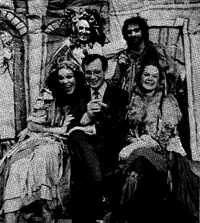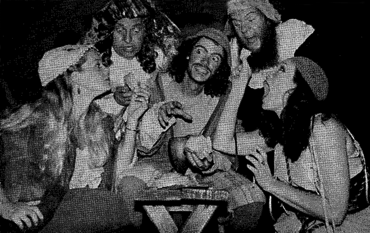Door Nigel Smith

Door Dan Bartow 1982-1983.
English readers and playgoers should take Bredero most seriously, for he is more perceptive and more brilliantly entertaining than nearly all of his English contemporaries, and in his plays he often reveals himself to be the equal of Shakespeare and Ben Jonson. I’ll confine my comments to the Spaanschen Brabander (1617), the one Bredero play that has been translated into English, by David H. Brumble. It is based on the Spanish picaresque fiction Lazarillo de Tormes (1554), and concerns a bankrupt merchant from Antwerp, Jerolimo, who tries to flourish in burgeoning Amsterdam, only to find himself forced to flee with further ignominy.
Bredero’s highly accurate and diverse description of Amsterdam life in 1580, when the action is set, shows monetary gain winning over moral and distributive justice. This is not the world of early modern courtly virtue, which is mocked throughout his play, but an open embrace of the different dialects and accents that populated the city, revealing the drives of so many different people, the majority of whom were immigrants from somewhere else for the sake of safety and to flourish. The Spaanschen Brabander is the play about migration, and Bredero is early modern migration’s most perceptive analyst.
The sum total of lived experience that follows is a calculus of economic exploitation and cheating, the way of the city and a cumulative apocalypse for the audience, even as we are, I believe, meant to be delighted and entertained. The play offers in its action and speeches so many Dutch city life portraits, each of which might be given its own canvas, but that build into a tremendous rhythm of gain by deprivation. There is no adjustment of the moral order as there is in the conclusion of a Shakespeare comedy, or a perceived threat from excessive exchange to the system of justice and order, as there is in a Ben Jonson play, but instead a demonstration that the order is as it is because that is how the movement of people and commodities, how migration, has made the life of Amsterdam happen. After migration comes hybridity, since Bredero also discusses (if inconclusively) interracial sex and mixed breeding. Moreover, as a trained painter, Bredero delivered a visual precision in his language that reached further into economic reality: Dutch dominance in the international art market, even if Amsterdam had in 1617 yet to reach the peak of its influence and achievement in painting.

In the year when we celebrate Bredero’s works by commemorating his early and untimely death, let it be a cause for the translation into English of more of his exquisite, life-affirming plays, poems and songs.
Images: Dan Bartow 1982-1983 via: DBNL
Dit bericht verscheen eerder op Bredero 2018.
Laat een reactie achter